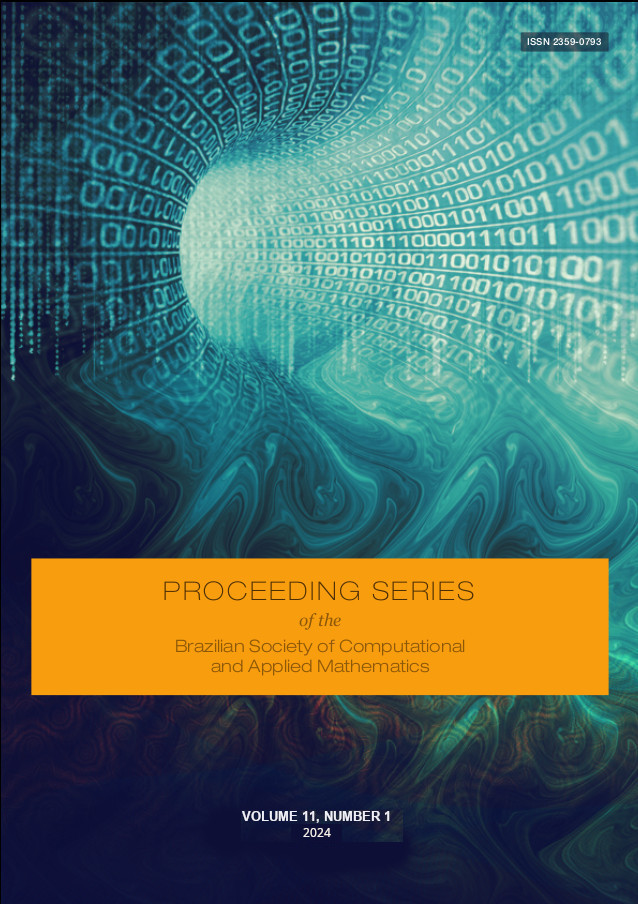Constructing fuzzy material implication functions derived from general grouping functions
DOI:
https://doi.org/10.5540/03.2025.011.01.0370Palabras clave:
General Grouping Functions, Fuzzy Implication Functions, System ModelingResumen
Grouping and overlap functions have been largely applied in the modeling of fuzzy systems and problems involving decision-making based on fuzzy preference relations due to their richness in the classes of aggregation functions compared to t-conorms and t-norms. Grouping functions allow one to measure the amount of evidence favoring two given alternatives in pairwise comparisons. However, as they are not associative, in the context of n-dimensional problems, some generalizations of grouping functions are required, like n-dimensional grouping functions and the more flexible class called general grouping functions (GGF). Since GGF widens the scope of applications, a novel class of fuzzy implication functions constructed from GGF and fuzzy negations is provided in this work. We study their main properties, characterizations, construction methods, and examples, paving the way for their use in modeling more flexible fuzzy systems.
Descargas
Citas
A. Dolati, J. F. Sánchez, and M. Úbeda Flores. “A copula-based family of fuzzy implication operators”. In: Fuzzy Sets and Systems 211 (2013), pp. 55–61.
T. C. Asmus, G. P. Dimuro, B. Bedregal, J. A. Sanz, S. Pereira Jr., and H. Bustince. “General Interval-valued Overlap Functions and Interval-valued Overlap Indices”. In: Information Sciences 527 (2020), pp. 27–50.
T. C. Asmus, J. A. A. Sanz, G. Pereira Dimuro, B. Bedregal, J. Fernandez, and H. Bustince. “N-Dimensional Admissibly Ordered Interval-Valued Overlap Functions and Its Influence in Interval-Valued Fuzzy-Rule-Based Classification Systems”. In: IEEE Transactions on Fuzzy Systems 30.4 (2022), pp. 1060–1072.
M. Baczyński, P. Grzegorzewski, R. Mesiar, P. Helbin, and W. Niemyska. “Fuzzy implications based on semicopulas”. In: Fuzzy Sets and Syst 323 (2017), pp. 138–151.
M. Baczyński and B. Jayaram. Fuzzy Implications. Berlin: Springer, 2008.
B. C. Bedregal. “On Interval Fuzzy Negations”. In: Fuzzy Sets and Systems 161.17 (2010), pp. 2290–2313.
G. Beliakov, H. Bustince, and T. Calvo. A Practical Guide to Averaging Functions. Berlin, New York: Springer, 2016.
H. Bustince, M. Pagola, R. Mesiar, E. Hüllermeier, and F. Herrera. “Grouping, Overlaps, and Generalized Bientropic Functions for Fuzzy Modeling of Pairwise Comparisons”. In: IEEE Transactions on Fuzzy Systems 20.3 (2012), pp. 405–415.
L. De Miguel, D. Gómez, J. T. Rodríguez, J. Montero, H. Bustince, G. P. Dimuro, and J. A. Sanz. “General overlap functions”. In: Fuzzy Sets and Systems 372 (2019), pp. 81–96.
G. P. Dimuro, B. Bedregal, and R. H. N. Santiago. “On (G,N)-implications derived from grouping functions”. In: Information Sciences 279 (2014), pp. 1–17.
D. Gómez, J. T. Rodríguez, J. Montero, H. Bustince, and E. Barrenechea. “n-Dimensional overlap functions”. In: Fuzzy Sets and Systems 287 (2016), pp. 57–75.
D. Gómez, J. T. Rodríguez, J. Montero, and J. Yáñez. “Fuzzy Community detection based on grouping and overlapping functions”. In: 2015 IFSA-EUSFLAT. Paris: Atlantis Press, 2015, pp. 1514–1519.
E. P. Klement, R. Mesiar, and E. Pap. Triangular Norms. Dordrecht: Kluwer, 2000.
H.-W. Liu. “Two classes of pseudo-triangular norms and fuzzy implications”. In: Computers & Mathematics with Applications 61.4 (2011), pp. 783–789.
Y. Ouyang. “On fuzzy implications determined by aggregation operators”. In: Information Sciences 193 (2012), pp. 153–162.
J. Qiao and B. Q. Hu. “On interval additive generators of interval overlap functions and interval grouping functions”. In: Fuzzy Sets and Systems 323 (2017), pp. 19–55.
H. Santos, G. P. Dimuro, T. Asmus, G. Lucca, E. Bueno, B. Bedregal, and H. Bustince. “General grouping functions”. In: 2020 IPMU. Vol. 1238. Communications in Computer and Information Science. Cham: Springer, 2020, pp. 481–495.
H. Zhou and X. Liu. “Characterizations of (U2,N)-implications generated by 2-uninorms and fuzzy negations from the point of view of material implication”. In: Fuzzy Sets and Systems 378 (2020), pp. 79–102.

